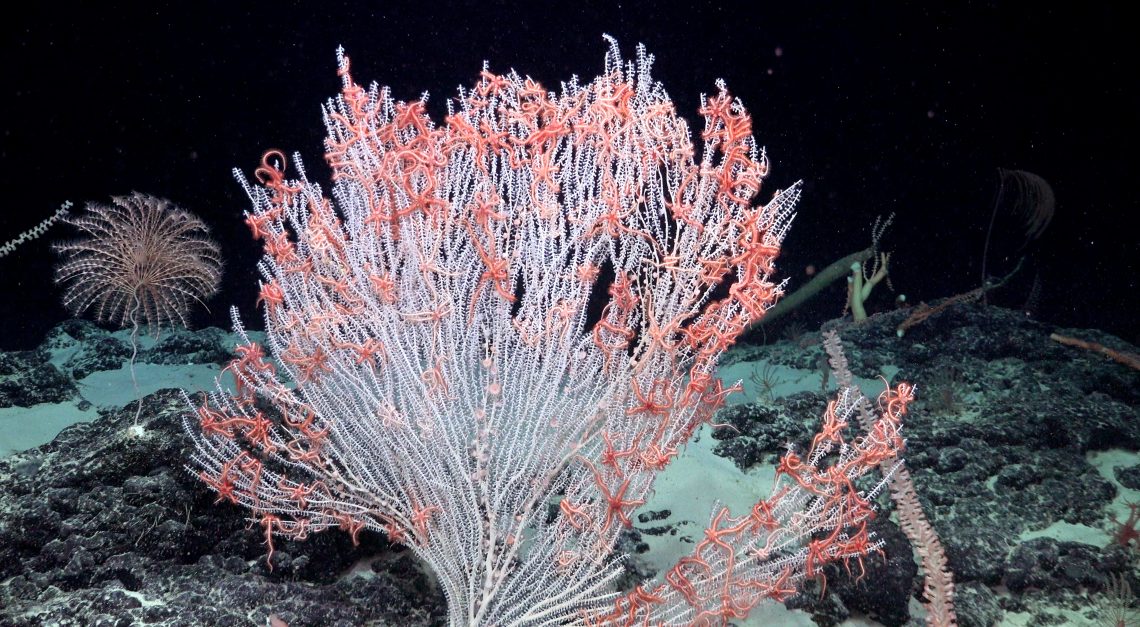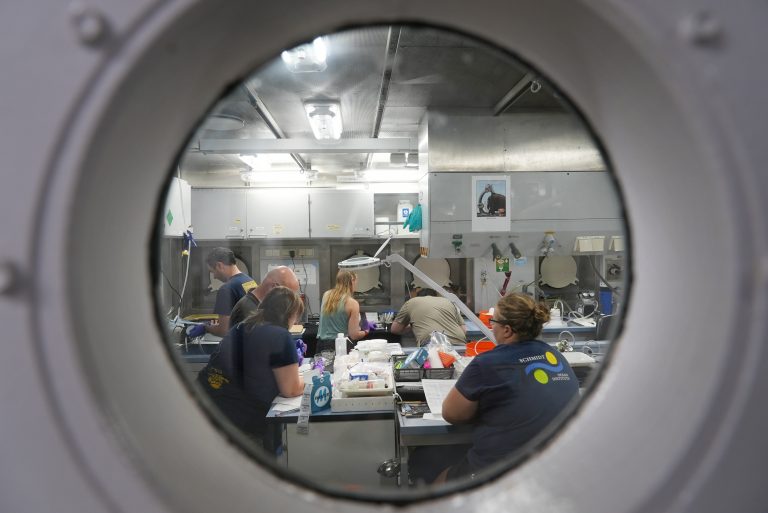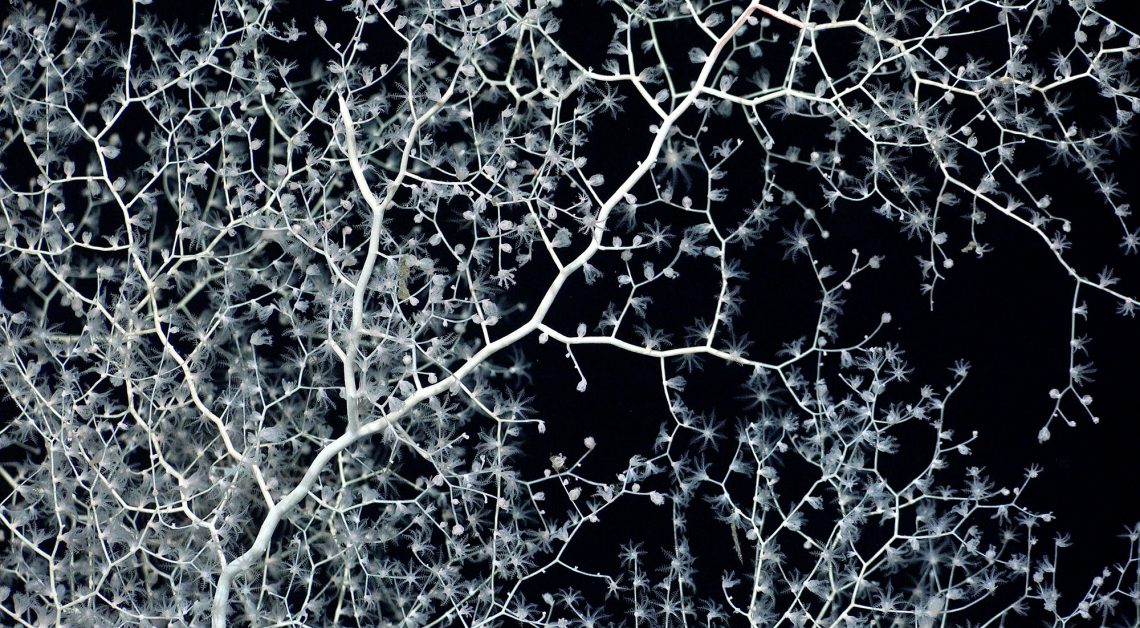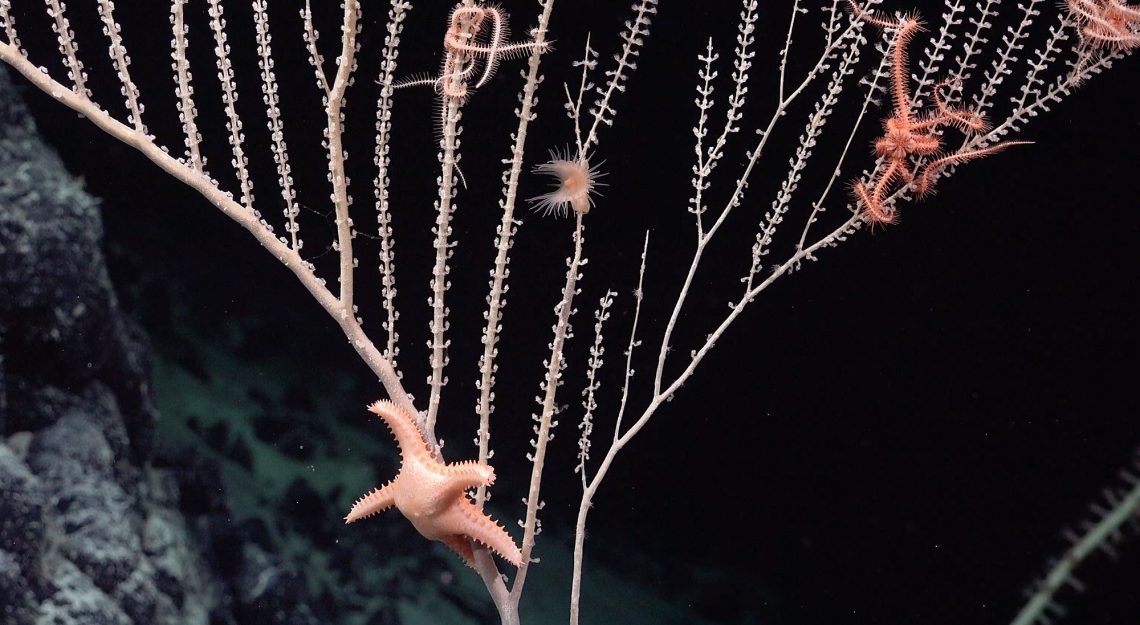We often consider life to be diverse. Some living things are mobile and grow hair, such as humans, dogs, and cats. Others are immobile and hairless, such as plants. Some live for only a few weeks – such as fruit flies – whereas others can live for hundreds of years, like corals and redwood trees. There are numerous ways that we can illustrate the different forms of life, which enables us to marvel at how rich and diverse our global ecosystem is. But there is also beauty in finding commonalities in life. Just as human societies can be a mixture of individuals with diverse backgrounds and interests, we all share common needs: like the desire to survive and provide for our children. These commonalities are the ties that bind us that create society and a sense of community.

But– Are there other commonalities in nature? Is there such a thing as a universal commonality that connects all living things? This is the question we seek to answer on R/V Falkor this trip.
For over a century, scientists have been studying the cause of disease in humans and other animals, such as mice, fruit flies, and livestock. From this work emerged the idea that all these animals and insects are born with a common set of genes that help defend against infection. In the absence of this defensive network (known as the innate immune system) we are sensitive to life-threatening infections. This common need to prevent infections against bacteria, viruses, and fungi, is served by a set of proteins found in humans called Pattern Recognition Receptors.

Pattern Recognition Receptors are the molecular eyeballs of our cells that are used to see the microbes around us. When bacteria, for example, enter our body, our own cells detect the invader using these “molecular eyes.” And just like humans who witness a crime will call the police, Pattern Recognition Receptors report the presence of the bacterial criminal to our own immune cells, which then attack and eradicate the infection. All terrestrial animals use a similar set of molecular eyes and immunity police to defend against infections. In fact, this defense network is so common in nature that one can find a common set of defensive genes in the DNA of all animals, such as birds, mammals, and even fish. However, a remarkable discovery had emerged over the last several years. As the genomes of more and more organisms have been sequenced, a theme has emerged.

Corals and other marine invertebrates – representing some of the oldest forms of multicellular life – seem to have different innate immunity genes than the rest of us multicellular organisms. How did we get our Pattern Recognition Receptor immunity genes if the organisms that preceded us do not have them or have different ones? Is it possible that infections do not exist in ancient organisms? Certainly, they do.
Bacteria thrive in the ocean, and infections can occur in all living things. In fact, even bacteria can be infected by viruses. We know almost nothing about how corals and other basal organisms recognize and fight infections. But based on the disconnect between our defensive genes and those found in the ancient marine world, different innate immune systems may operate in the roots of the evolutionary tree of life. Our work on R/V Falkor is designed to identify such a system. During this trip, we are testing for the ways that corals from marine environments respond to bacterial infections.

Do corals have Pattern Recognition Receptors that serve as molecular eyeballs to detect infections, just like we do? If they do, then corals should be able to detect bacteria and activate defensive responses to fight the infection. As our trip develops, we will be studying new and diverse types of corals (and potentially other marine animals). Our goal is to return to land with the answer to the question—what unites all multicellular organisms? Maybe, despite our diversity in lifestyles, all of us are just trying to not get sick.

